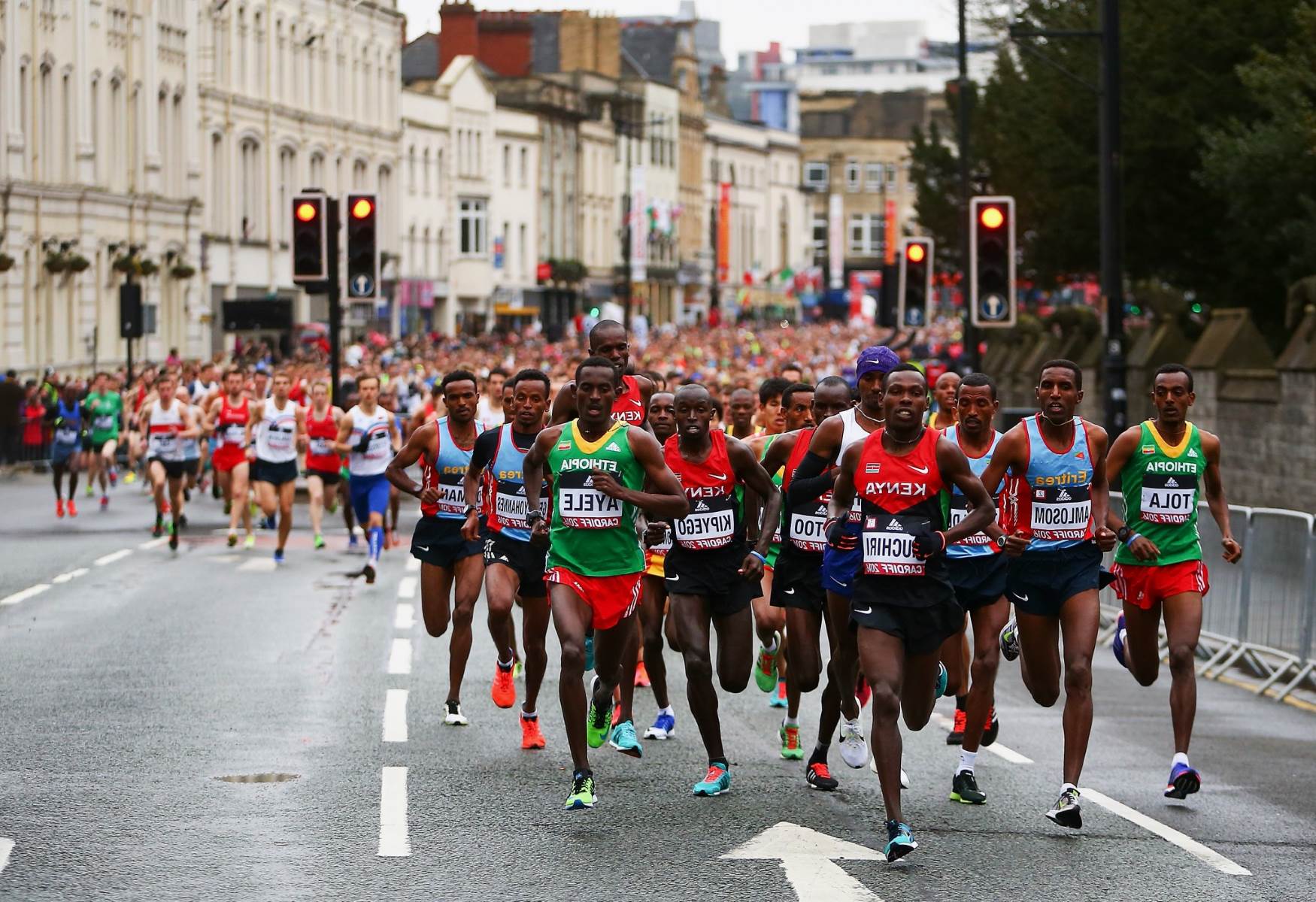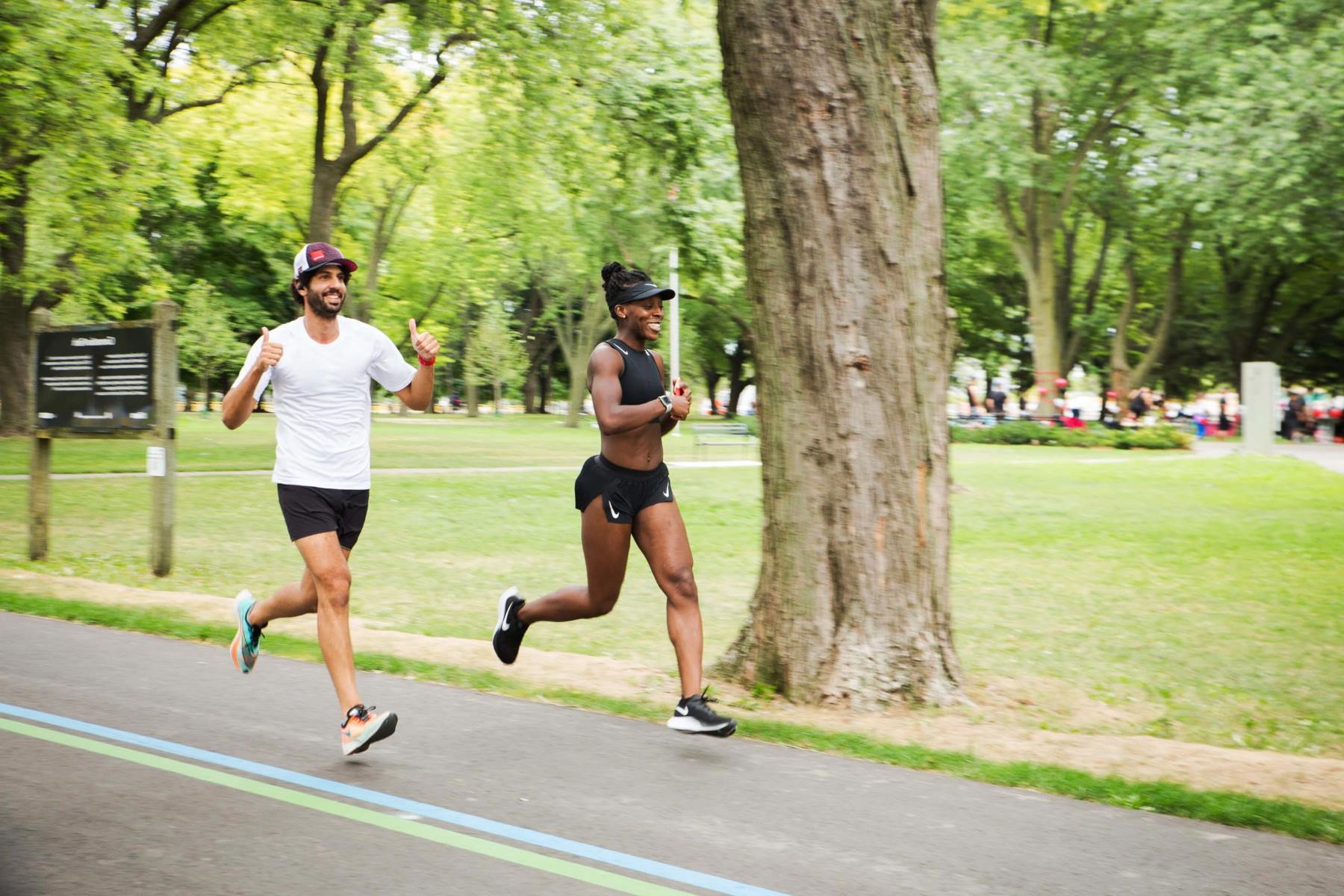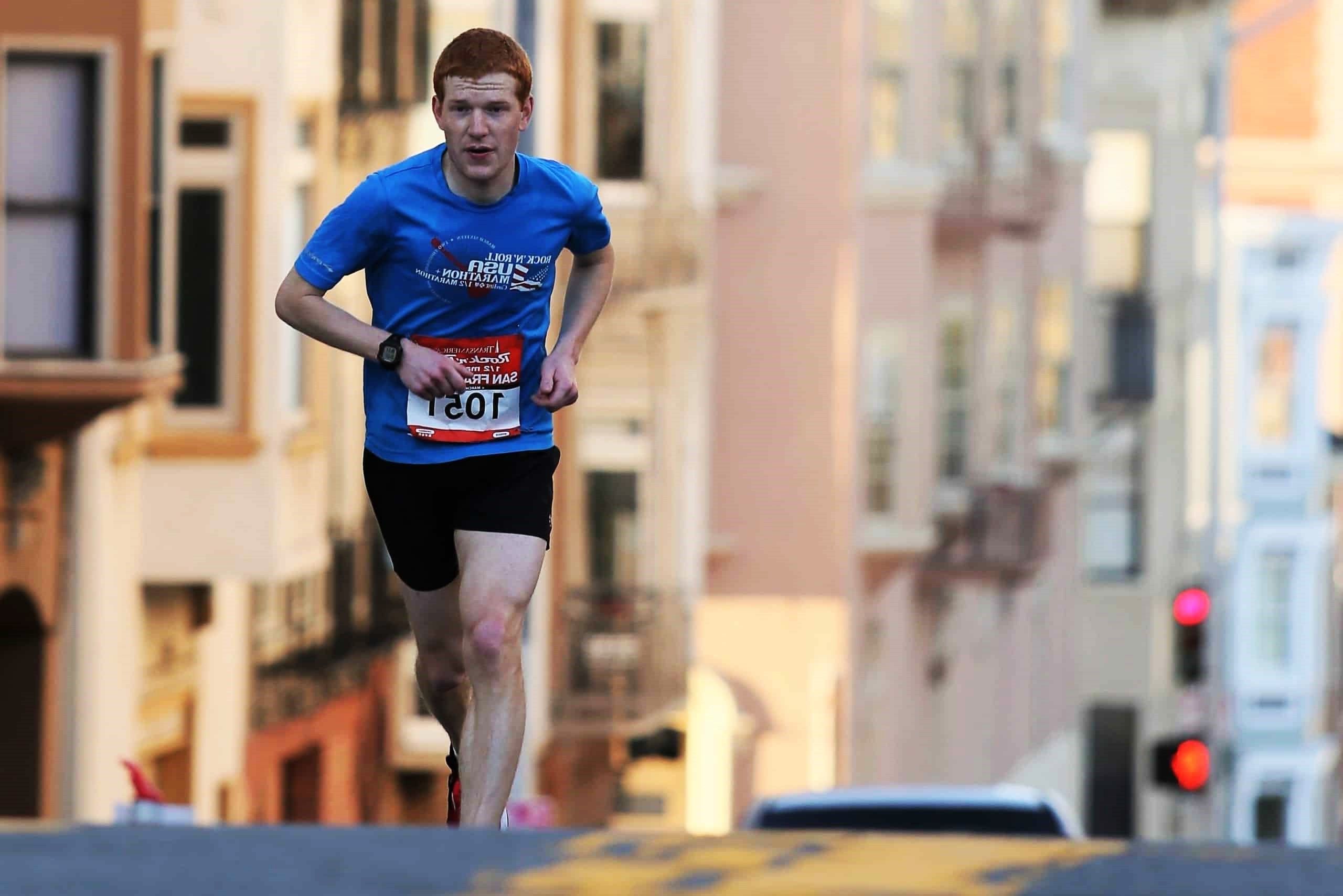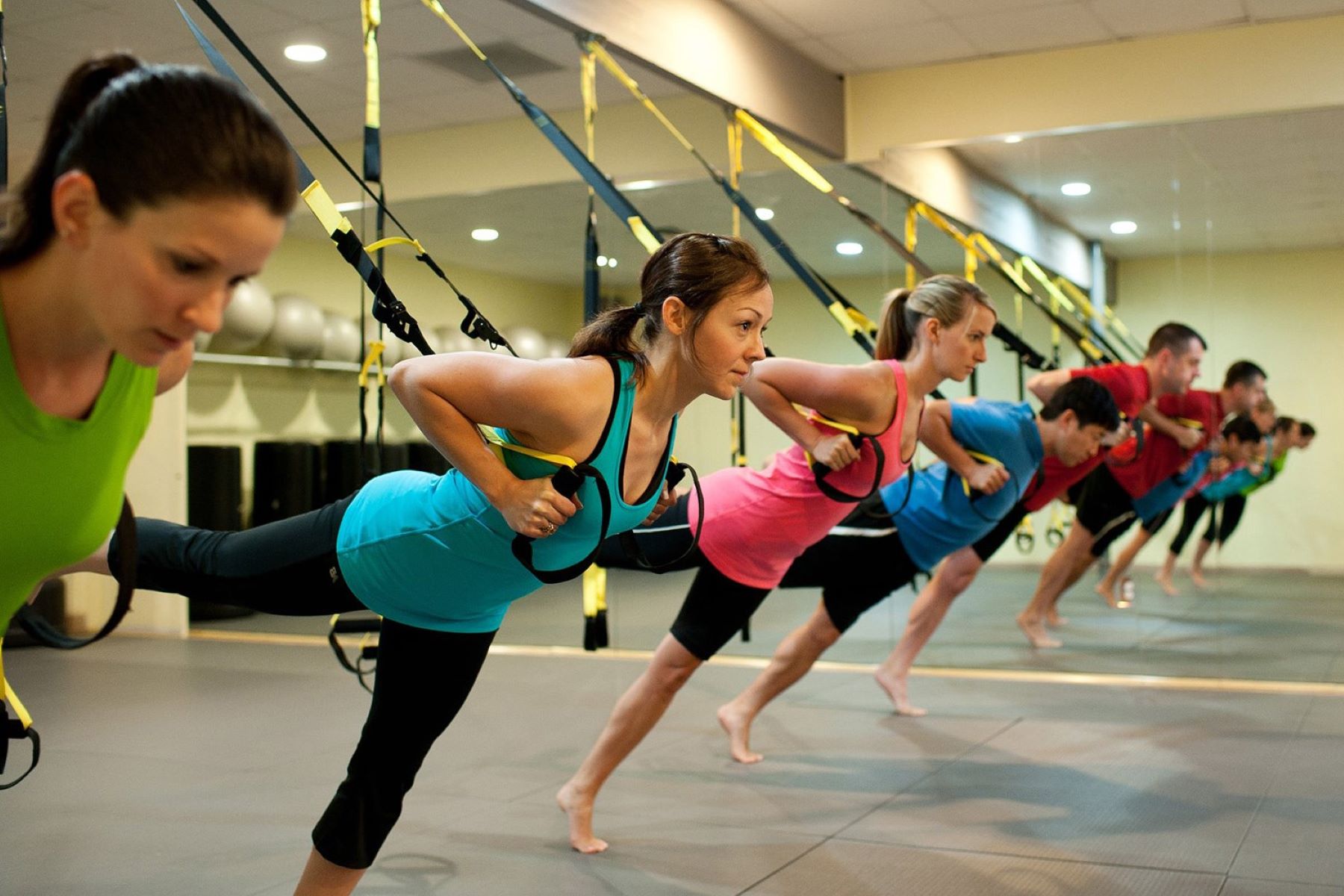Home>Training & Techniques>Improving Your Finishing Kick For Your Next 5km Or 10km Run
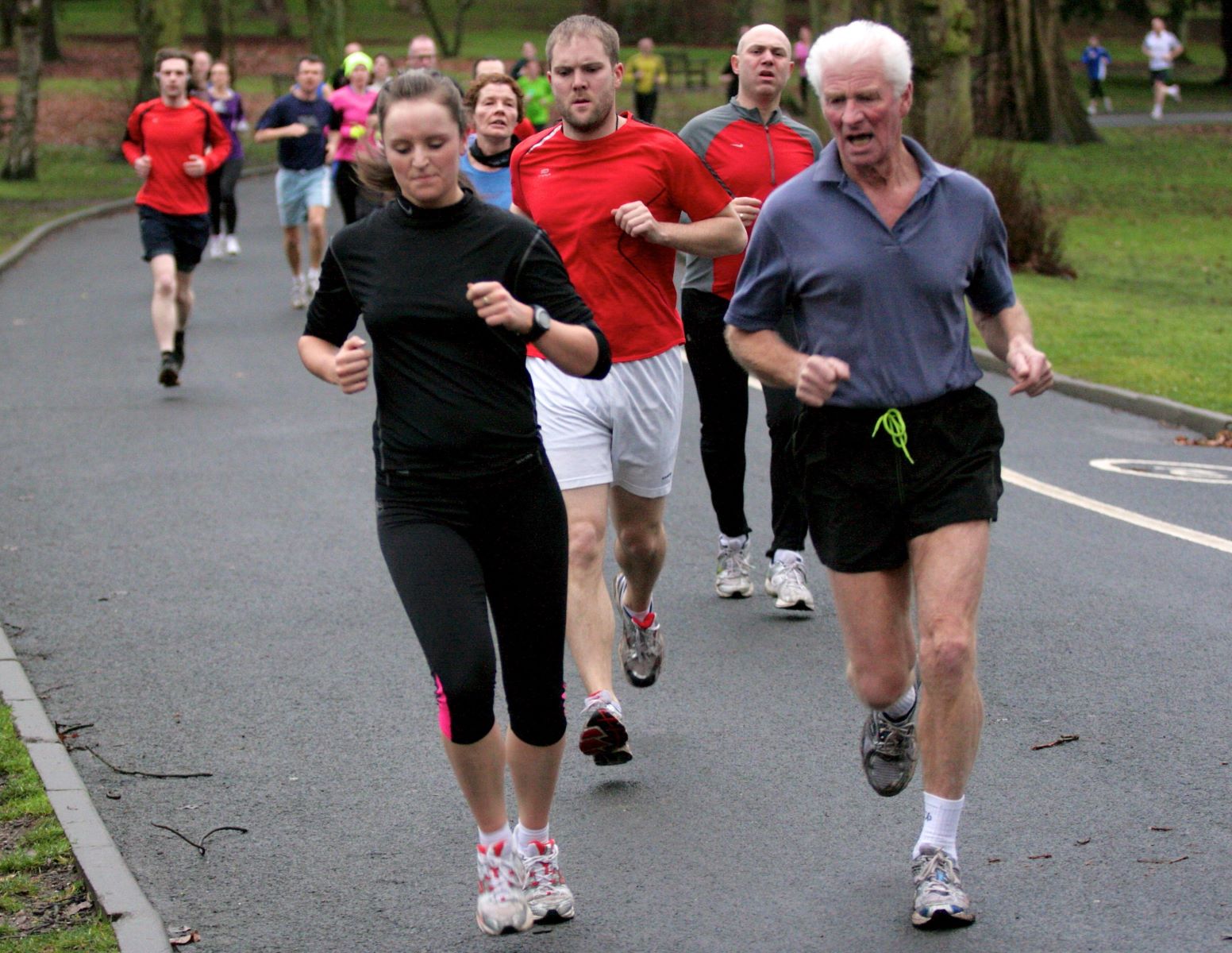

Training & Techniques
Improving Your Finishing Kick For Your Next 5km Or 10km Run
Published: February 29, 2024
Enhance your 5km or 10km run with effective training and techniques to boost your finishing kick. Improve your race performance now!
(Many of the links in this article redirect to a specific reviewed product. Your purchase of these products through affiliate links helps to generate commission for Therunningadvisor.com, at no extra cost. Learn more)
Table of Contents
- Understanding the Importance of a Strong Finishing Kick
- Strategies for Building Endurance and Speed
- Incorporating Interval Training into Your Routine
- Utilizing Hill Work to Improve Strength and Power
- Mental Preparation and Visualization Techniques
- Tips for Maintaining Proper Form and Technique
- The Role of Nutrition and Hydration in Enhancing Your Kick
Understanding the Importance of a Strong Finishing Kick
In the realm of distance running, the finishing kick holds a paramount significance. It serves as the defining moment, the crescendo of your race, where all your training, endurance, and mental fortitude culminate. Whether you're striving for a personal best in a 5km or 10km race, the ability to summon a potent finishing kick can be the difference between achieving your goal and falling short.
A strong finishing kick empowers you to surge past competitors, conquer that last incline, and propel yourself across the finish line with unwavering determination. It is the manifestation of your resilience and unwavering spirit, showcasing your ability to summon a burst of speed when fatigue threatens to engulf you.
Moreover, the psychological impact of a strong finishing kick cannot be overstated. As you approach the final stretch, the sight of fellow runners within reach can ignite a surge of adrenaline, propelling you to push beyond your perceived limits. This surge not only propels you physically but also invigorates your mental resolve, instilling a sense of accomplishment and fortitude that transcends the finish line.
In essence, the finishing kick embodies the culmination of your physical and mental prowess, encapsulating the essence of your training and dedication. It is the exclamation point at the end of your race, a testament to your unwavering commitment and tenacity.
Understanding the pivotal role of a strong finishing kick is the first step toward harnessing its potential. By recognizing its significance, you can begin to cultivate the physical and mental attributes necessary to unleash a potent finishing kick when it matters most.
Strategies for Building Endurance and Speed
To excel in distance running and unleash a formidable finishing kick, it is imperative to focus on building both endurance and speed. These two components are intertwined, each complementing the other to elevate your overall performance. Here are several strategies to fortify your endurance and speed, paving the way for a potent finishing kick:
1. Long Runs:
Engaging in regular long runs is fundamental for enhancing endurance. These extended sessions not only bolster cardiovascular fitness but also condition the muscles and mind for sustained effort. By gradually increasing the duration of your long runs, you can acclimate your body to prolonged exertion, laying a solid foundation for a robust finishing kick.
2. Tempo Runs:
Incorporating tempo runs into your training regimen is instrumental in honing speed and stamina. These workouts involve sustained efforts at a challenging, yet manageable pace, simulating race conditions and fortifying your ability to maintain speed over extended distances. By integrating tempo runs into your routine, you can cultivate the resilience and mental fortitude essential for a commanding finishing kick.
3. Fartlek Training:
Fartlek, a Swedish term for "speed play," involves alternating between periods of increased and relaxed effort during a run. This dynamic training method not only enhances speed and endurance but also cultivates adaptability and agility. By incorporating fartlek sessions into your training, you can develop the capacity to surge forward with vigor during the crucial stages of a race.
4. Interval Training:
Structured interval training, characterized by alternating periods of high-intensity effort and recovery, is pivotal for elevating speed and cardiovascular fitness. By executing intervals at varying distances and intensities, you can enhance your body's ability to generate and sustain speed, laying the groundwork for an electrifying finishing kick.
5. Strength Training:
Supplementing your running regimen with strength training exercises is indispensable for fortifying the muscles essential for speed and endurance. Targeting key muscle groups, such as the quadriceps, hamstrings, and core, can enhance running economy and power, enabling you to unleash a potent finishing kick with unwavering strength and control.
By integrating these strategies into your training routine, you can cultivate the endurance and speed necessary to propel yourself toward an exhilarating finishing kick. Each component contributes to the holistic development of your running prowess, empowering you to conquer the final stretch with unwavering vigor and determination.
Incorporating Interval Training into Your Routine
Interval training stands as a cornerstone in the pursuit of enhancing speed, endurance, and overall running performance. This structured approach involves alternating between periods of high-intensity exertion and active recovery, serving as a catalyst for physiological adaptations that elevate cardiovascular fitness and running prowess.
The versatility of interval training lies in its adaptability to various distances, intensities, and terrains, making it a dynamic and effective tool for runners seeking to fortify their finishing kick. By integrating interval sessions into your training regimen, you can cultivate the ability to sustain heightened speeds and surges, essential for unleashing a potent finishing kick during races.
One of the primary benefits of interval training is its capacity to elevate VO2 max, the maximum amount of oxygen your body can utilize during intense exercise. By subjecting your body to repeated cycles of intense effort followed by brief recovery, interval training stimulates cardiovascular adaptations, enhancing the efficiency of oxygen utilization and bolstering aerobic capacity. This, in turn, equips you with the physiological foundation to sustain increased speeds and exertion, crucial for a commanding finishing kick.
Moreover, interval training fosters neuromuscular adaptations, refining your body's ability to recruit and synchronize muscle fibers for optimal performance. The repeated surges of speed during interval sessions cultivate neuromuscular coordination, enabling you to unleash rapid and forceful strides during the critical stages of a race. This neuromuscular refinement is instrumental for summoning a potent finishing kick, allowing you to propel yourself toward the finish line with unwavering power and agility.
Incorporating interval training into your routine also cultivates mental fortitude and resilience. The structured nature of interval sessions, often characterized by challenging efforts and brief recovery periods, nurtures mental toughness and adaptability. As you push through the demanding intervals, you fortify your capacity to endure discomfort and sustain intensity, essential attributes for summoning a resolute finishing kick when fatigue looms.
Furthermore, interval training presents a platform for honing pacing strategies and race-specific speed. By tailoring interval sessions to mirror the demands of your target race distance, you can refine your ability to surge and maintain speed during the pivotal moments of competition. This race-specific conditioning empowers you to execute a strategic and potent finishing kick, propelling you past competitors and toward the culmination of your race with unwavering determination.
In essence, incorporating interval training into your routine is pivotal for cultivating the physiological adaptations, mental fortitude, and race-specific speed necessary for a commanding finishing kick. By embracing the structured intensity of interval sessions, you can fortify your body and mind, empowering yourself to unleash a resolute surge of speed when it matters most.
Utilizing Hill Work to Improve Strength and Power
Incorporating hill workouts into your training regimen is a potent strategy for fortifying the physical and mental attributes essential for a commanding finishing kick. Hill training serves as a dynamic and multifaceted tool, fostering improvements in strength, power, running economy, and mental resilience. By embracing the challenges presented by inclines, you can cultivate the physical and mental fortitude necessary to propel yourself toward an exhilarating finish.
1. Strength Development:
Hill workouts are instrumental for enhancing muscular strength, particularly in the lower body. As you ascend inclines, your quadriceps, hamstrings, glutes, and calves undergo heightened engagement, fostering muscular adaptations that bolster power and endurance. The resistance presented by uphill running stimulates muscle fibers, cultivating strength and resilience essential for sustaining speed and surges during races. Moreover, the eccentric loading experienced during downhill running nurtures muscular control and stability, fortifying the muscles against fatigue and enhancing overall strength.
2. Power Generation:
Ascending hills demands an amplified propulsion and force production from the lower body. This requirement for heightened power output cultivates neuromuscular adaptations, refining the coordination and synchronization of muscle fibers. As a result, hill training nurtures the capacity to generate forceful and explosive strides, essential for summoning a potent finishing kick. The dynamic nature of hill running instills a sense of agility and vigor, empowering you to surge forward with unwavering power during the critical stages of a race.
3. Running Economy Enhancement:
Hill workouts contribute to the refinement of running economy, the measure of energy expenditure at a given pace. As you navigate inclines, your body adapts to the increased demand for oxygen and energy, fostering physiological adaptations that enhance efficiency. This heightened running economy translates to improved endurance and speed, pivotal for sustaining a potent finishing kick. By integrating hill training into your routine, you refine your body's ability to maintain speed and exertion, laying the groundwork for an electrifying surge toward the finish line.
4. Mental Resilience:
Confronting the challenges posed by hills nurtures mental fortitude and resilience. The arduous nature of hill running demands unwavering determination and focus, instilling a sense of mental toughness essential for overcoming adversity during races. As you conquer inclines, you cultivate the mental resilience necessary to push through discomfort and fatigue, empowering yourself to summon a resolute finishing kick when the finish line beckons.
In essence, hill training stands as a formidable ally in the pursuit of a potent finishing kick. By embracing the physical and mental challenges presented by inclines, you can fortify your strength, power, running economy, and mental resilience, laying the foundation for an exhilarating surge toward the culmination of your race.
Read more: Improve Your 5K Speed With This Workout
Mental Preparation and Visualization Techniques
Mental preparation and visualization techniques are integral facets of cultivating a potent finishing kick in distance running. The mind wields immense influence over physical performance, and harnessing its power through deliberate mental preparation and visualization can yield profound benefits. By nurturing a resilient and focused mindset, runners can summon unwavering determination and fortitude during the critical stages of a race, propelling themselves toward an exhilarating finish.
Harnessing Mental Preparation:
Mental preparation encompasses a spectrum of strategies aimed at cultivating a resilient and focused mindset. This involves honing the ability to manage pre-race jitters, maintain composure during challenging segments, and summon a surge of determination when fatigue threatens to encroach. Engaging in mindfulness practices, such as deep breathing, visualization, and positive self-talk, can anchor runners in the present moment, fostering a sense of calm and readiness. Additionally, establishing pre-race routines and rituals can imbue a sense of familiarity and confidence, nurturing a composed and prepared mental state.
The Power of Visualization:
Visualization, or mental imagery, serves as a potent tool for fortifying the mind and body. By vividly envisioning the various stages of a race, including the final stretch and the exhilarating finish, runners can cultivate a sense of familiarity and preparedness. Visualizing the execution of a commanding finishing kick, complete with surges of speed and unwavering determination, instills a sense of confidence and conviction. This mental rehearsal primes the mind and body to execute the envisioned performance, fostering a seamless transition from visualization to actualization during the race.
Cultivating Mental Resilience:
Mental resilience is pivotal for summoning a potent finishing kick, especially when confronted with physical and psychological fatigue. By embracing adversity as an opportunity for growth and fortitude, runners can cultivate a resilient mindset that thrives under challenging conditions. Engaging in positive self-talk, affirming one's capabilities, and reframing discomfort as a temporary sensation can bolster mental resilience, empowering runners to push through fatigue and summon a resolute finishing kick.
Embracing Adaptive Mindset:
Maintaining an adaptive mindset is essential for navigating the unpredictable nature of distance running. Embracing flexibility and adaptability enables runners to adjust their race strategy in real-time, optimizing their approach based on prevailing conditions and competitors. This adaptive mindset fosters a sense of control and empowerment, enabling runners to unleash a potent finishing kick with strategic precision and unwavering resolve.
In essence, mental preparation and visualization techniques are indispensable components of cultivating a potent finishing kick in distance running. By nurturing a resilient and focused mindset, harnessing the power of visualization, and embracing mental resilience and adaptability, runners can propel themselves toward the finish line with unwavering determination and fortitude.
Tips for Maintaining Proper Form and Technique
Maintaining proper form and technique is paramount for optimizing running efficiency and minimizing the risk of injury, especially during the critical stages of a race when fatigue sets in. Here are essential tips to uphold impeccable form and technique, ensuring a potent finishing kick:
-
Posture and Alignment: Focus on maintaining an upright posture with a slight forward lean from the ankles. Keep the head aligned with the spine, gaze forward, and avoid slouching or leaning backward. Engage the core muscles to stabilize the torso, promoting efficient energy transfer and minimizing excess movement.
-
Arm Position and Movement: Keep the arms relaxed yet purposeful, allowing them to swing naturally in sync with the stride. Maintain a 90-degree angle at the elbows, and avoid excessive side-to-side movement. The arms should drive backward rather than across the body, propelling the forward momentum and enhancing overall efficiency.
-
Cadence and Stride Length: Strive for an optimal cadence, aiming for around 170-180 steps per minute. Focus on a quick turnover and shorter, more frequent strides to minimize ground contact time and reduce the risk of overstriding. This promotes a more efficient and sustainable running gait, crucial for a potent finishing kick.
-
Foot Strike and Push-off: Aim for a mid-foot or forefoot strike to harness the natural shock absorption and propulsion capabilities of the foot. Focus on a powerful push-off from the toes with each stride, propelling yourself forward with vigor and efficiency. Avoid excessive heel striking, which can lead to braking forces and energy dissipation.
-
Relaxation and Fluidity: Strive for a relaxed and fluid running motion, minimizing tension in the shoulders, arms, and legs. Embrace a smooth and rhythmic stride, allowing for a seamless transfer of energy and momentum. Relaxation fosters efficiency and conserves energy, essential for summoning a potent finishing kick when it matters most.
-
Breathing and Rhythm: Focus on maintaining a steady and controlled breathing rhythm, syncing it with your stride and exertion level. Embrace deep diaphragmatic breathing to optimize oxygen intake and minimize the risk of shallow, inefficient breathing. A harmonious breathing pattern enhances overall relaxation and endurance, vital for a commanding finishing kick.
-
Mindful Body Awareness: Cultivate a heightened awareness of your body's movements and sensations, focusing on alignment, muscle engagement, and overall running mechanics. This mindful approach enables you to make real-time adjustments, optimizing your form and technique to unleash a potent finishing kick with precision and control.
By integrating these tips into your training and race-day approach, you can uphold impeccable form and technique, laying the groundwork for a commanding finishing kick. Embracing proper form and technique not only enhances running efficiency but also minimizes the risk of fatigue-induced breakdown, empowering you to surge toward the finish line with unwavering strength and finesse.
The Role of Nutrition and Hydration in Enhancing Your Kick
Nutrition and hydration play a pivotal role in fortifying the physical and mental attributes necessary for a potent finishing kick in distance running. The strategic management of fuel and fluid intake not only sustains performance but also optimizes the body's capacity to summon a surge of speed and endurance during the critical stages of a race.
Pre-Race Nutrition:
Prior to a race, prioritizing carbohydrate-rich meals and snacks is essential for replenishing glycogen stores in the muscles and liver. Carbohydrates serve as the primary fuel source during prolonged exertion, and adequate glycogen reserves are crucial for sustaining speed and power during the final stretch. Additionally, incorporating moderate amounts of lean protein and healthy fats supports muscle repair and overall energy balance.
Hydration Strategies:
Optimal hydration is fundamental for maintaining physiological function and performance. Adequate fluid intake in the days leading up to the race, coupled with strategic hydration on race day, ensures proper fluid balance and electrolyte levels. Electrolyte-rich beverages or supplements can aid in mitigating the risk of dehydration and sustaining muscular function, vital for summoning a potent finishing kick.
Intra-Race Fueling:
During longer races, strategic fueling with easily digestible carbohydrates, such as energy gels or sports drinks, can replenish glycogen stores and sustain energy levels. This targeted fueling strategy supports endurance and mental acuity, enabling runners to summon a surge of speed and power as they approach the final stretch.
Post-Race Recovery:
Effective post-race nutrition and hydration are instrumental for replenishing depleted glycogen stores, facilitating muscle repair, and optimizing recovery. Consuming a balanced meal or snack containing carbohydrates and protein within the post-race window supports the restoration of energy reserves and the repair of muscle tissue, laying the foundation for subsequent training and future racing endeavors.
Mental Clarity and Focus:
Beyond the physiological impact, proper nutrition and hydration foster mental clarity and focus, essential for summoning a potent finishing kick. Maintaining stable blood sugar levels through strategic fueling prevents mental fatigue and sustains cognitive function, empowering runners to summon unwavering determination and fortitude during the final stages of a race.
In essence, the strategic management of nutrition and hydration is integral for enhancing the capacity to unleash a potent finishing kick in distance running. By prioritizing pre-race nutrition, strategic hydration, intra-race fueling, and post-race recovery, runners can optimize their physical and mental readiness, propelling themselves toward the finish line with unwavering strength and endurance.


